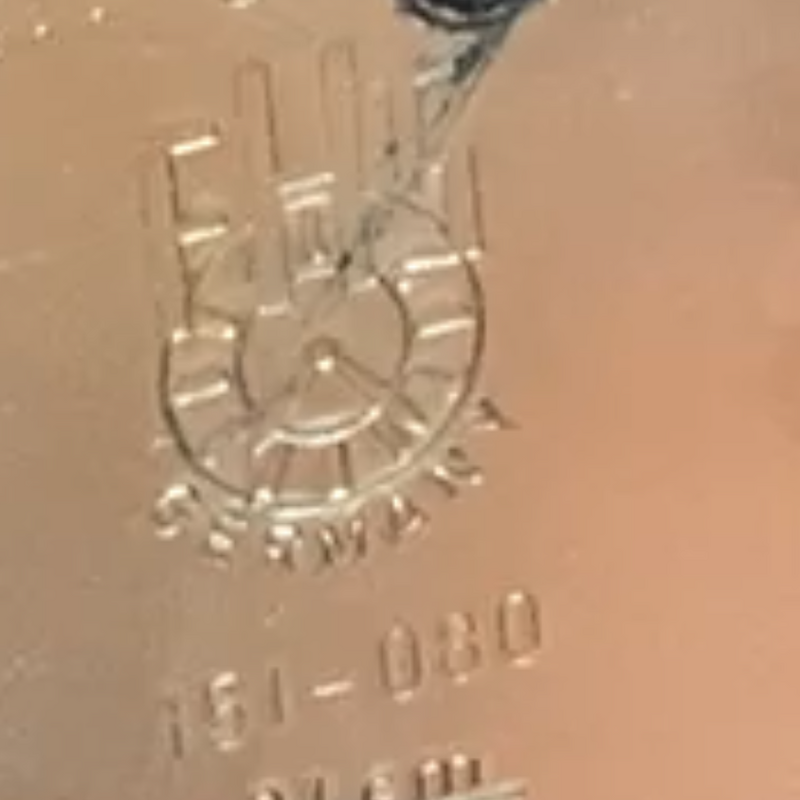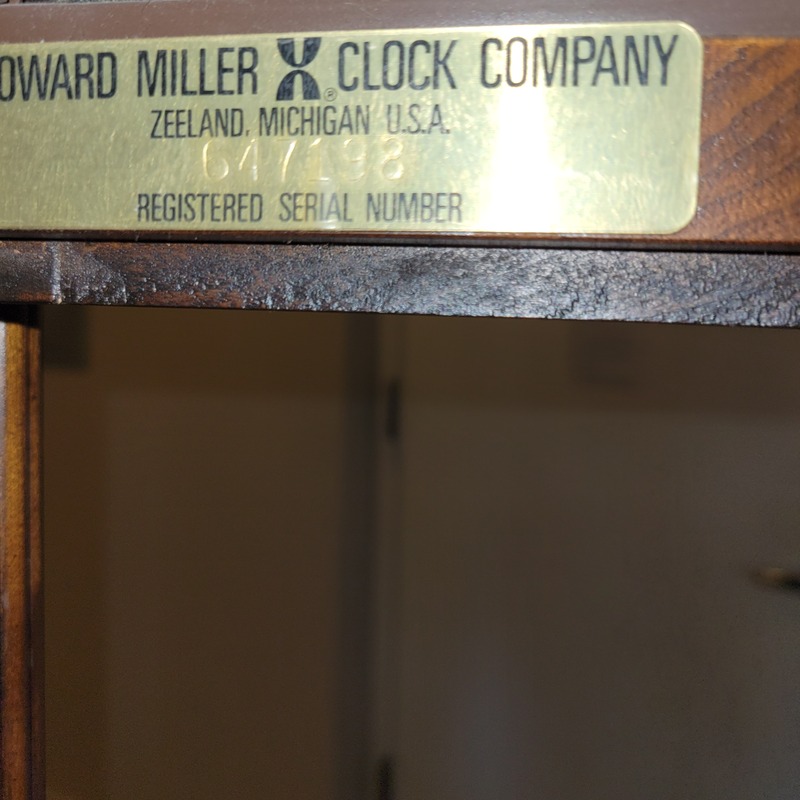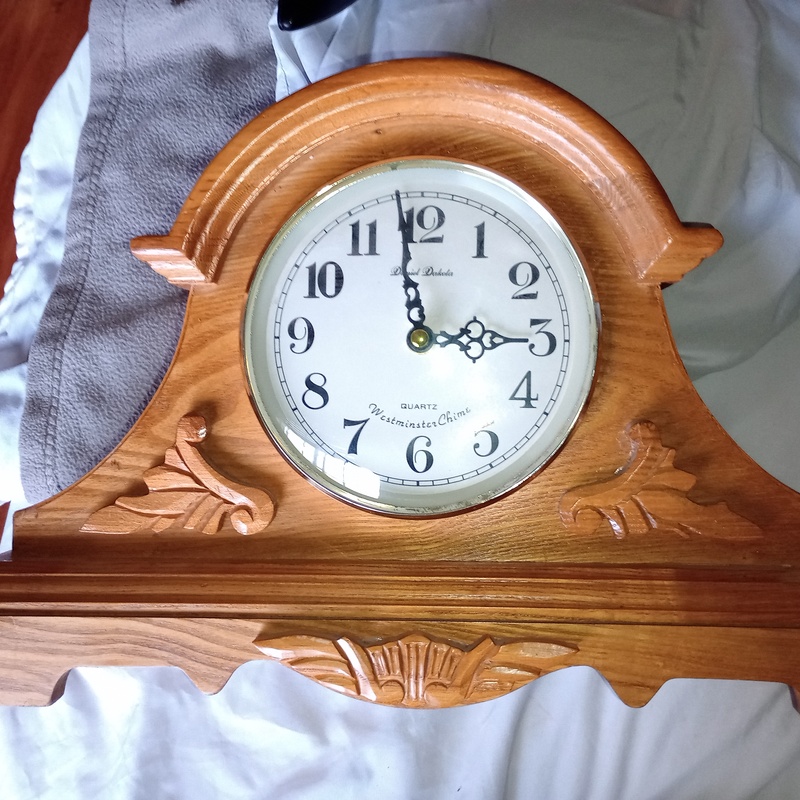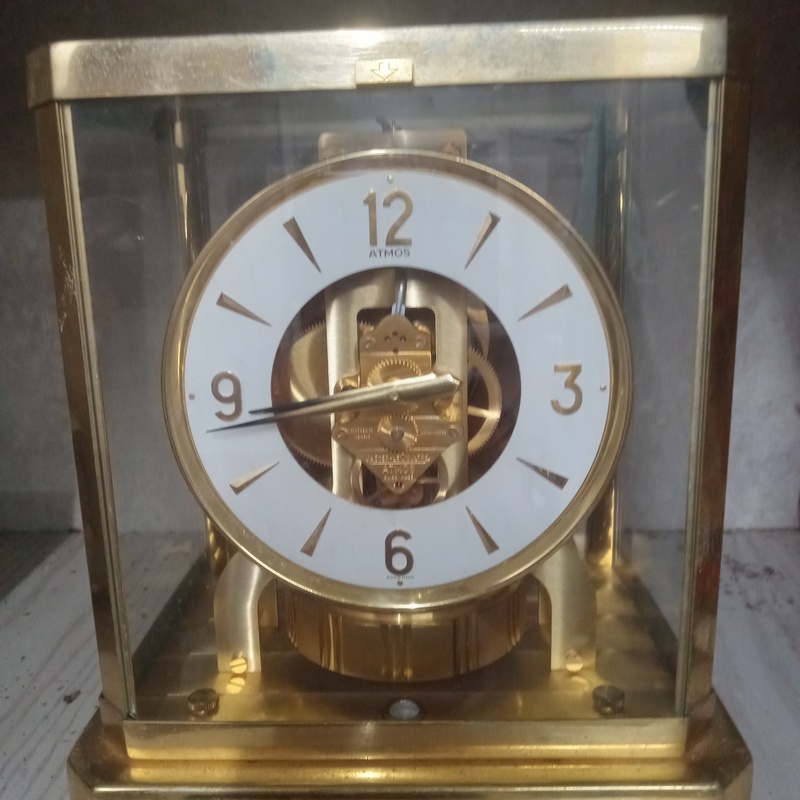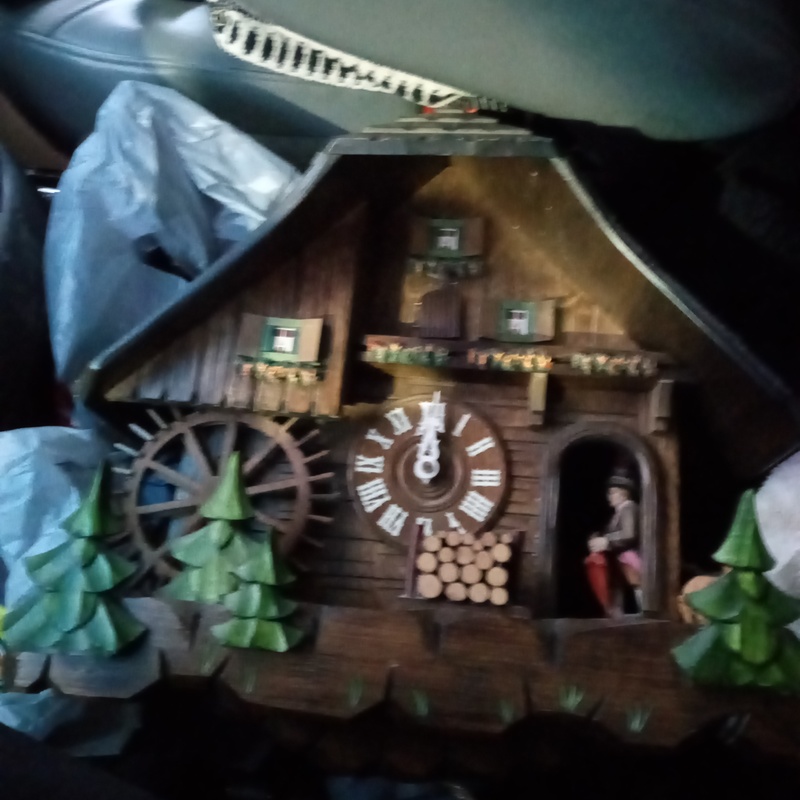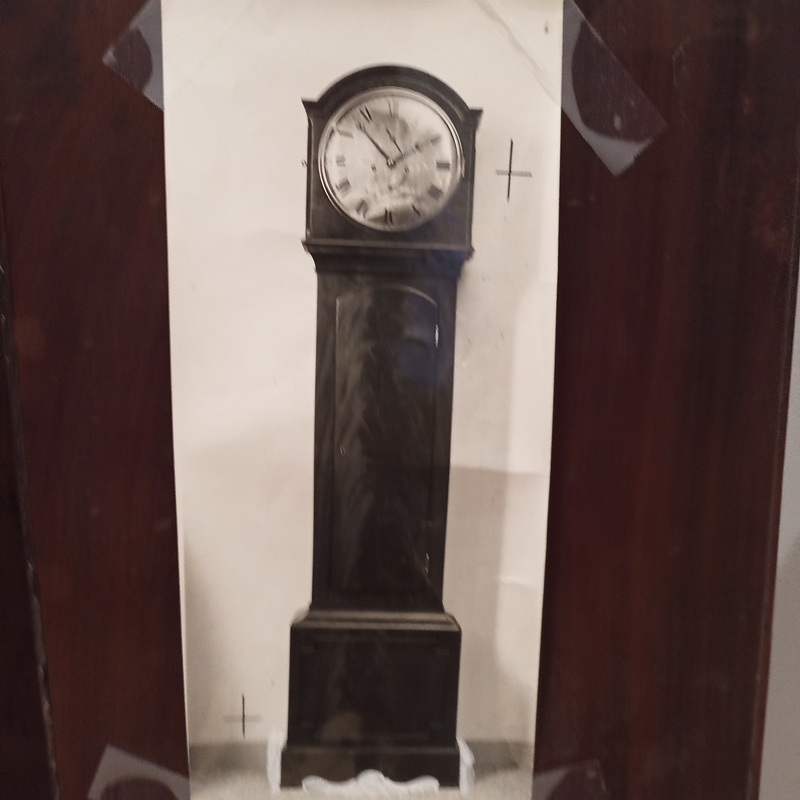
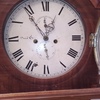
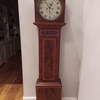
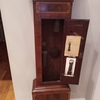

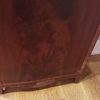
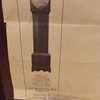
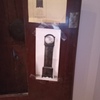
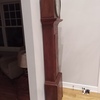
Grandfather ClocK
Grandfather Clock. 210cm tall, 50cm wide, 35 depth. At least 100 yeasr old. Two clocks put together over 50 years ago - don't know why they were combined to make one clock. Fully functional with all parts. Some wood inlay missing. Fragile. Possibly Danish in origin. There are pictures of what could be clock from old newspapers that might nor n=might not be accurate.
Family owned for 100 or more years.
Inherited
Maybe


Hello Erik,
Thank you for sending in this family clock to mearto.com for an appraisal. I shall try to help you with that today.
TITLE:
Mahogany and holly veneered, two weight, eight day time and striking, diminutive longcase clock, case/dial (circa 1830-1840) and movement (not shown) together by association, case and dial most likely made in the United Kingdom, circa first half of the 19th century.
DESCRIPTION:
Case: 210 cm tall, 50 cm wide, and 35 cm deep this is a mid-19th century (early Victorian), mahogany veneered diminutive longcase clock with light, holly veneered cross-banding. The hood has a concave break-arch domed pediment (the arch is broken by the shoulders at each corner) with a glazed brass dial bezel centered in the façade of the hood and flanked by fluted and chamfered hood corners. A concave moulding leads down to the trunk section with a horizontal veneered holly frieze above the full length rectangular trunk door with light cross banding around its circumference. The corners of the trunk are chamfered and vertically fluted. Below an ogival double stepped moulding transitions down to the square mahogany veneered base with light colored cross-banded edges resting on straight French feet with a shaped apron between.
Dial: Round white painted dial with black enameled Roman hours, closed minute track to the outside, subsidiary seconds dial under twelve, round calendar dial over six, matching skeletonized steel “Gothic hands with escargot” (second quarter of the 19th century dial and hands). The dial is marked “David J”, the rest illegible, possibly David Jones of Wales or England (there were a multitude of David Jones clockmakers in the U.K.).
Movement: Said to be from a different clock than was originally in this case, and not shown. It is apparently a two weight powered movement, of eight day duration and striking hourly with a long seconds pendulum swinging in the case. The marriage of two clocks took place according to what you write about 50+ years ago. I have no way of knowing the type of movement or what country it came from but this is obviously a marriage and a working clock. Originally, the movement would have been a rectangular solid brass plate type with brass pillars connecting the plates at each of the four corners, anchor escapement, butterfly gear and rack and snail striking on the front plate with grooved brass winding drums to take up the cord or brass string holding the weights.
Condition: Case – chips of inlay are missing, while the veneer itself has a multitude of age cracks from drying out over these past 150+/- years. The pendulum bob has not swung inside this case long enough to make a significant mark against the backboard.
Dial: Missing part of the name/location of the clockmaker. Flakes of paint near the seven position. Movement – Replaced, not seen and not evaluated.
Marriages of clock parts or major parts together by association, for all practical purposes, destroys the value of the clock as an antique and makes it a piece for the decorator or Home Furnishings market.
HISTORY: Ole Haslund House Antiques:
The example cited in the photograph on the door is a clock made in London circa 1810 and exported to Copenhagen and sold in the retail store, “Ole Haslunds Hus”, the flagship store of Illums Bolighus at Amagertorv, Copenhagen. The building is a good architectural example of 19th century Historicism. The design is from 1867. The windows have mullions executed as small Hermes figures carrying Ionic capitals.
Ole Haslund (1877-1962) was a well-known antiques and art dealer who, by combining his sure sense of furniture, fabrics and colors with a deep love of arts and crafts, gradually became a Copenhagen institution where the bourgeoisie could get help with the design of its housing.
Over the years he had shops at several prominent addresses in Copenhagen, and when he arranged art exhibitions in them, the event was news material in the newspapers and often the talk of the town. He had a colossal network within the art and trade environments both at home and abroad and with his iconic bowler hat was a very well-known figure in the Copenhagen street scene.
COMMENTARY & PRICING:
Many of these short grandfather clocks were made for export to other countries, such as those in Scandinavia where they were retailed in stores like Haslunds in Denmark.
Originally the same type of clocks, early in the 19th century had silvered dials and later on they switched to enameled painted metal dials. They were made in all areas of England, including Wales and Scotland and England itself. I do not think such clocks were made in Ireland where they tended to be solid mahogany and full size examples during the 19th century.
If in very good original condition, clocks like yours would sell in the $750-$1250 range today. Being a marriage of two clocks reduces that price by about two thirds. Therefore, I believe the fair market value of your example would be in the range of $250-$400.
I hope that helps you to understand where and when this clock was originally made, at least as close as I can get to it with the photos you showed me.
My best,
David

